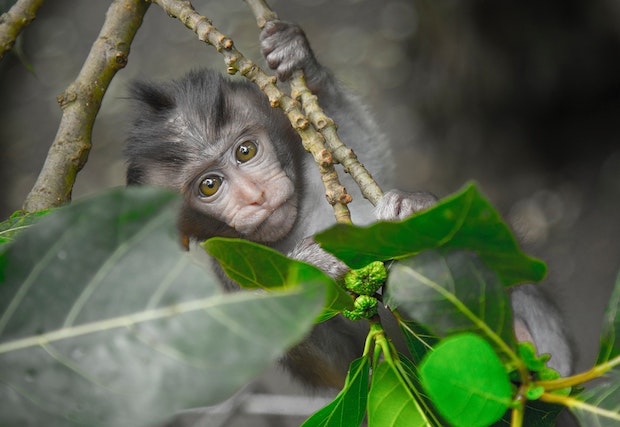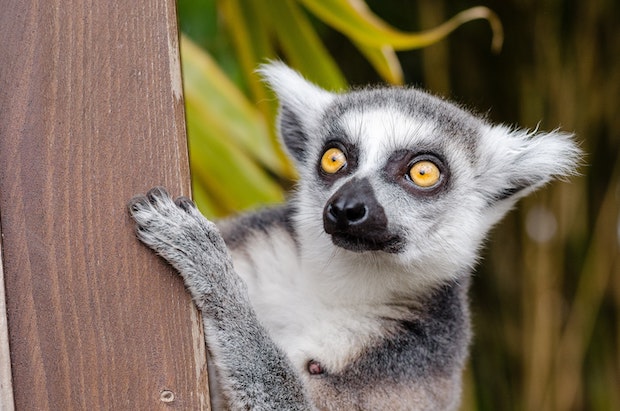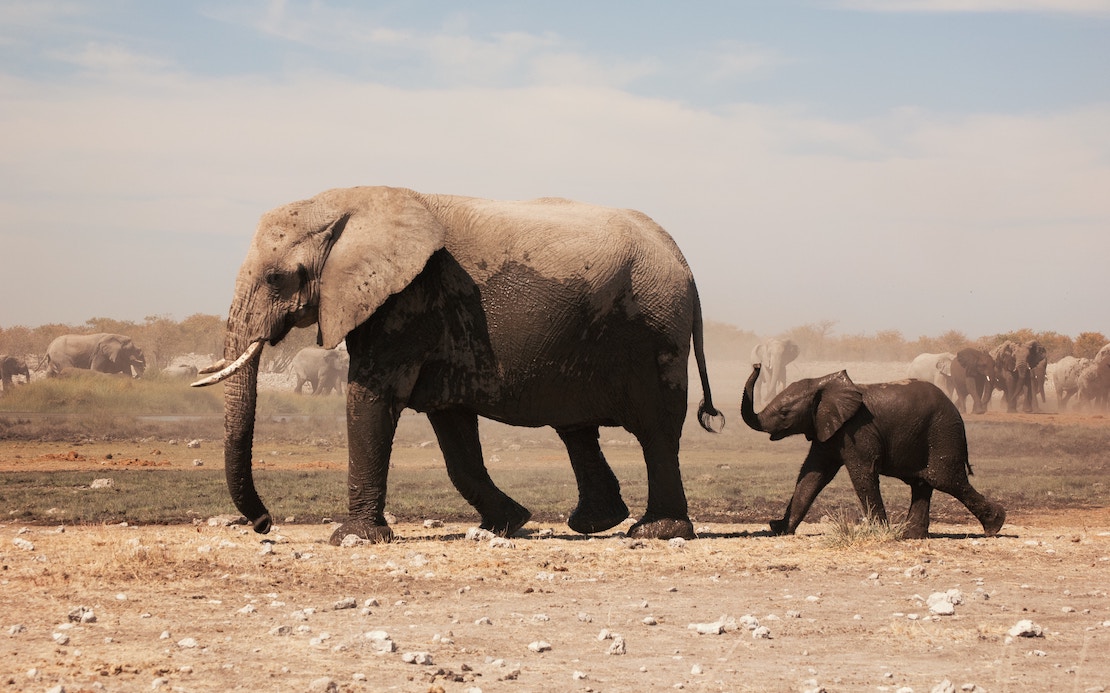Few things captivate like seeing:
A cheetah running in the grassland…
A grizzly bear fishing for salmon…
A lion roaring at night…
These sorts of wildlife encounters make you stop, and appreciate the impressive beauty and dignity of animals and nature.
Sadly, not all animal interactions are what they seem. Travelers often aren’t aware of it, but many wildlife tourism activities actually hurt the creatures.
The reality is: Wildlife tourism is a complex industry. As an article in National Geographic notes, “discerning the difference between ethical and problematic wildlife experiences” is a difficult task.
But not all is lost.
Ethical animal interactions and wildlife volunteer projects exist. You can have a positive impact on wildlife, even as a tourist. What’s needed is more education and awareness, and a better understanding of what wildlife tourism should look like. This way, you know to join the right activities.
In this guide, we’ll discuss the dark side of wildlife tourism and explain the right way to interact with animals. We’ll also highlight reputable organizations and projects so you can explore ethical wildlife encounters and animal volunteer work.
The Dark Side of Wildlife Tourism
Perhaps you’ve read about Kim Kardashian riding on an elephant in Indonesia. A quick Google search shows all the criticism she received for it.
Whether the criticism was deserved or not, stories like Kim Kardashian’s should serve as positive learning moments. They should motivate us to learn more about the realities of wildlife tourism, and understand why elephant rides can damage the species.
Here’s an overview of the main issues with wildlife attractions:
Wildlife tourism takes animals out of their natural habitat
Many facilities that specialize in elephant treks, tiger petting, swim with dolphin experiences, and other interactions hold animals in captivity. Given the lack of regulations and oversight, many places don’t offer animals sufficient space and resources to live naturally.
Furthermore, the situation often gets worse than just not enough space. A study of 3,000 elephants in the wildlife tourism industry by World Animal Protection (WAP) found that 75% lived in ‘severely cruel’ conditions (more on this below).
Animal cruelty and abuse is widespread in wildlife tourism
The National Geographic feature, Suffering Unseen, details shocking scenes: shackled elephants, declawed and drugged tigers, abused bears in the circus, and more.
Whether it’s elephant rides or tiger petting, up-close animal interactions may not be as cheery as they look. If the wildlife tourism attractions aren’t prioritizing animal welfare, the creatures you encounter may be experiencing intense suffering.
Some kinds of wildlife tourism don’t prioritize animal rights
The University of Oxford carried out an extensive study on animal welfare in the wildlife tourism industry. Researchers analyzed wildlife attractions across five categories:
- Animal interactions like riding on elephants and swimming with dolphins
- Wildlife sanctuaries that protect endangered and injured animals
- Wildlife farms, like farms where crocodiles are bred for meat
- Animal entertainment, such as street performances
- Wild attractions, such as gorilla sightseeing
Among all the wildlife attractions, only wildlife sanctuaries earn positive scores for animal welfare and conservation. Animal entertainment receives negative scores for both.
As researchers noted, increased demand, a focus on profits, and travelers’ lack of awareness all contribute to the growing animal welfare problem in the tourism industry.
The Right Way to do Wildlife Tourism: No More Elephant Rides or Tiger Petting
Consider this statistic: Wildlife tourism accounts for between 20-40% of global tourism.
Now, we know why wildlife tourism is so popular: Animals amaze us!
But the economics of wildlife encounters create problems.
As stated in the article, Suffering Unseen, the “wildlife tourism industry caters to people’s love of animals but often seeks to maximize profits by exploiting animals from birth to death. The industry’s economy depends largely on people believing that the animals they’re paying to watch or ride or feed are having fun too.”
Tourists, eager to make memories while traveling abroad, don’t consider the possibility of animal cruelty. Even more concerning, animal cruelty can be tough to spot. And pictures on social media only add to the confusion of what’s acceptable.
It doesn’t have to be this way.
The solution is educating yourself before you interact with wildlife. Here are a few tips:
Read the bad reviews
Even for wildlife attractions that have poor animal welfare standards, they may receive good ratings from tourists. When you look up reviews, read the bad ones to see what they say.
As a rule of thumb, David Macdonald, Director of Oxford University’s Wildlife Conservation Research Unit, recommends avoiding any wildlife attraction that scores under 80% on sites like TripAdvisor.
Investigate the facility
Look for evidence the facility focuses on animal welfare and conservation. Find out if:
- the total area is sufficient
- there is space to escape the crowds
- crowd size is limited
- the facility upholds animal rights (for animals in captivity, the ASPCA says animals should have the freedom to express normal behavior, as well as freedom from hunger and thirst, discomfort and pain, injury and disease, and fear and distress)
Finally, ensure animal interactions only benefit the animals. View pictures, check out the website, and read reviews. They absolutely should not offer elephant rides, tiger petting, monkey performances, and other similar wildlife encounters. These activities hurt and stress the animals, and can cause long-term trauma.
Unless you’re giving medical attention, or providing care to captive-born wildlife that can’t return to the wild, you should not have physical contact with wild animals. Activities should be observation-based and include tasks designed to support their existence in nature.
Go into the wild
The best way to avoid the mistake of supporting a harmful wildlife attraction is to only visit natural environments. This includes observations of animals in national parks and wildlife sanctuaries. Such places protect animals from activities like illegal poaching and pet trading.
For instance, through Global Vision International (GVI), a leader in ethical volunteer abroad adventures, you can join a wildlife research project in Kruger National Park. As a volunteer for big cats in South Africa, you can see lions, cheetahs, and leopards in their natural habitat, and you can improve conservation strategies to ensure they can thrive in the wild.
Look for international certifications
Ethical wildlife attractions have obtained certification and have undergone third-party inspections. Some common certifications that demonstrate a commitment to animal welfare include:
- Blue Flag certification: awarded to sustainable marine tourism operators
- Fair Trade Tourism certification: awarded to those who follow best practices of responsible tourism
Volunteer for animals abroad
If you want to encounter wildlife but don’t want to contribute to anything unethical and harmful, volunteering offers you a solution. Just look for organizations that focus on ethical animal volunteer work.
For example, Via Volunteers, an ethical volunteering organization in South Africa, only works with the most responsible wildlife sanctuaries and projects. Their Lion Sanctuary project near Cape Town has earned international praise for exceptional care of captive-born lions. As a volunteer, you’ll ensure lions get treated with dignity and respect, and are protected from commercial use and breeding.
What do Ethical Animal Interactions Look Like?
Now, you know wildlife tourism should NOT entail:
- selfies with lions
- elephant rides
- tiger petting
What wildlife tourism should involve is:
- animal rescue and care, such as caring for rescued sea turtles
- observing creatures in the wild, such as ethical safaris in Tanzania
- conservation, research, and protection, like panda research in China
If you want to observe and study animals in the wild, or take part in work to protect endangered wildlife, consider conservation and research projects. Organizations like Projects Abroad run wonderful conservation initiatives around the globe, from shark conservation research in Fiji to Big 5 wildlife conservation in Botswana.
So, even though you’ll actively avoid wildlife tourism activities like petting a tiger and riding on an elephant, you still have plenty of options. And by opting to participate in only ethical activities, you can make a real and lasting contribution.
We Have the Power to Change Wildlife Tourism
In the following sections, we detail the different ways you can ethically interact and volunteer with animals abroad.
Don’t think of these activities as alternatives to wildlife tourism. Rather, think of them as a form of responsible wildlife tourism.
After all, we can redefine wildlife tourism. By making more educated and ethical choices about how we interact with animals, and also by spreading the word to others, we can inspire collective action. And we can make the focus of wildlife tourism about animal welfare and conservation.
Wildlife Protection, Rehabilitation, and Release

The National Wildlife Federation has summarized main threats to wildlife:
- exploitation of resources by humans
- spreading of invasive species and disease
- habitat degradation and loss caused by climate change and pollution
- poaching, illegal pet trading, trophy hunting, etc.
- the abuses of the wildlife tourism industry
Whether it’s deforestation from commercial logging or more drought from changing precipitation patterns, animals face a variety of threats. Many majestic creatures, such as the chimpanzee, deal with displacement and diminishing room to call home.
Many of these animals, especially those that have experienced cruelty in the wildlife tourism and illegal pet trade industries, have become seriously hurt and ill. They require medical attention and sanctuaries just to survive. This is where you can make a difference.
If you want to ethically interact with animals abroad, focus on helping animals in need get back on their feet (or wings!). Volunteer with animals at wildlife sanctuaries and responsible rehabilitation and rescue centers. Plenty of great organizations support projects throughout the globe (see below).
Plan My Gap Year (PMGY)
Founded in 2011, Plan My Gap Year (PMGY) has become a leading volunteer travel organization. They send 4,000+ volunteers abroad each year and consistently receive great ratings from project participants.
Operating across 17 countries, PMGY’s fees for wildlife conservation and animal rescue projects begin from just $225. PMGY’s affordability, transparency, and strong ethical commitment make them a terrific organization to choose if you wish to volunteer with animals abroad.
Wildlife Rescue in Thailand
Price: from $210 per week ($1,014 for two weeks; $2,514 for 12 weeks)
Length: 1 to 12 weeks
Habitat degradation and loss have pushed many of Thailand’s creatures near extinction. At the wildlife rescue center, you’ll assist with rehabilitation and release efforts for animals that have been injured or fallen ill. The shelter houses gibbons, langurs, lorises, bears, otters, wild cats, and other amazing animals. Your work won’t involve physical interactions with the animals, but you will create environmental enrichments, prepare and distribute food, clean enclosures, and maintain forest areas.
You’ll stay in a bungalow with other volunteers during the program. When you’re not volunteering with animals, explore the scenery of Kaeng Krachan National Park and the beaches of Cha-am.
Sound like the perfect trip? Apply to be a wildlife rescue volunteer in Thailand!
Wildlife Rescue in Bali
Price: from $218 per week ($729 for two weeks; $3,489 for 16 weeks)
Length: 1 to 16 weeks
Indonesia’s forests are home to wonderful biodiversity, but animals face rapid deforestation and environmental degradation from rubber and palm oil plantations. Many endangered animals, such as the Javan lutung, pig-tailed macaque, palm cockatoo, sea turtle, and grey-headed fish eagle, have lost their native habitat or been abused in the wildlife tourism industry or illegal pet trade. As an animal volunteer with PMGY, you’ll work at a center dedicated to rehabbing and releasing these rescued primates, birds, and reptiles. Duties include:
- mangrove conservation for biodiversity preservation
- feeding and enrichment (hands-off tasks)
- enclosure cleaning and maintenance
- assistance with release back into the wild
When you’re not volunteering with animals in Bali, do yoga, relax on the beach, hike in the forests, and more.
Already thinking about Bali? Register now!
Projects Abroad
Projects Abroad began in 1992 with the goal of connecting volunteers to impactful service projects. To date, they’ve placed more than 125,000 volunteers overseas on a variety of projects, including ethical animal conservation initiatives.
Projects Abroad is a champion of Responsible Travel and works towards the United Nations Sustainable Development Goals. They get great reviews on Volunteer Forever, with a rating of 4.7 out of 5 stars across nearly 350 reviews. If you want to volunteer with animals abroad, Projects Abroad deserves your consideration. They thoroughly vet each wildlife volunteer project for ethical commitment, quality, safety, and impact. So, you can be sure you’re doing good for wildlife.
Giraffe and Lion Conservation in Kenya
Price: $2,970 for 1 week; $4,260 for 4 weeks
Length: 1 to 52 weeks
Want to protect endangered animals in the savannah? Then head to Kenya, where you’ll work with conservation experts at Soysambu Conservancy, an entity in charge of protecting and conserving local flora and fauna and wildlife. As a volunteer with the conservancy, your tasks will include:
- Researching endangered species in the area, such as Rothschild’s giraffe
- Setting up cameras to monitor wildlife behavior
- Planting trees and removing invasive plants
- Managing waterholes the animals use
As you can see, this wildlife conservation project in Kenya doesn’t involve harmful tourist activities, like elephant rides or tiger petting. The goal is to collect data so that we can protect endangered animals and help them thrive.
Interested in signing up? Click here!
Animal Rehab in Peru
Price: $3,220 for 1 week; $4,660 for 4 weeks
Length: 1 to 52 weeks
Journey to the Amazon and help with wildlife rehabilitation and reforestation. As a volunteer, you’ll work to protect wildlife, indigenous plants, and the future of one of the world’s most important natural areas. Duties range from helping with turtle and butterfly breeding programs to collecting data for biodiversity studies. You’ll also assist with rescuing, rehabbing, and releasing injured wildlife, which is really cool. In this program, your work goes a long way in protecting life in the Amazon rainforest.
If you want to do animal volunteer work abroad in the heart of the Amazon, look no further. The project is based at Taricaya Ecological Reserve, and you’ll have time for travel to popular cities and sites in Peru, such as Cusco and Lima.
Ready to go? Sign up as a wildlife rehab volunteer in Peru here!
Animal Rescue, Care, and Adoption

Think about this: In the USA alone, more than 6.5 million dogs and cats enter shelters each year, according to the ASPCA. Across the world, animal rights and animal ethics still have a long way to go, and that’s causing widespread homelessness and cruelty.
As Maximo Nivel, a leading volunteer abroad organization in Latin America, describes, in many countries, “a lack of education and understanding of animals and their unique needs” has left side streets filled with “abandoned dogs and cats.” Moreover, “exotic species are sometimes illegally captured and kept as pets,” and farm animals get neglected because farmers lack resources to care for them.
Clearly, domesticated animals, including farm animals, and exotic wildlife are enduring an animal rights crisis. From hunger to physical and emotional illness, the consequences have become tragic.
Your service is needed. From Vietnam to Ghana to Mexico, animal volunteers can make a significant impact by joining an animal rescue and care project, like the ones below.
Maximo Nivel
If you want to volunteer with animals in Latin America, look no further than Maximo Nivel. A leading organization in study abroad and educational travel in the region, Maximo Nivel began in 2003 and is an internationally accredited organization.
Maximo Nivel is committed to promoting animal rights in Latin America. Their animal care and wildlife volunteer programs strive to protect and heal those creatures that have suffered from abuse, neglect, illegal trading, and other forms of animal cruelty. From horse rescue and rehabilitation in Guatemala to volunteering for exotic animals at a zoo in Peru, you have plenty of opportunities to save animals in need!
Dog and Cat Shelter Volunteering in Guatemala
Price: from $314 per week ($645 for 1 week; $1,255 for 4 weeks)
Length: 1-4+ weeks
Make the trip to Antigua, a UNESCO World Heritage City known for its Spanish colonial buildings. There, you’ll care for stray cats and dogs that deal with hunger and health issues. When you volunteer with the stray animals, you’ll offer much-needed human company, provide food, groom the cats and dogs, and assist with veterinary care. You’ll help solve a public safety problem as well. Other duties include carrying out educational outreach, running fundraising campaigns, and getting involved with spay/neuter programs.
During off-hours, view the architecture in Antigua, hike in the nearby mountains, and immerse yourself in local culture. Sounds like quite the volunteer vacation, right?
Reserve your place at the dog and cat shelter in Guatemala!
Alpaca Farm Volunteering in Peru
Price: from $314 per week ($645 for 1 week; $1,255 for 4 weeks)
Length: 1-4+ weeks
Love alpacas? Then join this unique farm animal volunteer program in Cusco. You’ll help out at a family-owned farm that produces traditional Peruvian textiles from alpaca and llama wool. The alpacas and llamas are ethically raised, and your job as a volunteer will be to care for them. That includes feeding, cleaning pens, and doing light farm construction.
What’s also nice is that Cusco, a city in the Peruvian Andes, sits close to Machu Picchu, the Sacred Valley, and other Inca Empire sites.
Ready to go? Sign up to volunteer with alpacas now!
Love Volunteers
Love Volunteers has become known for their affordability, transparency, and commitment to making a lasting impact. Founded in 2009, Love Volunteers prioritizes intercultural exchange and serving local communities in a way that truly benefits them. With an average rating of 96% from past volunteers, it’s clear they’re doing good work.
Love Volunteers offers plenty of ethical ways to interact with animals abroad, from patrolling African game reserves to monitoring Asian elephants to protecting giant sea turtles. If you want to volunteer with animals at rescue, care, and adoption centers, they have high-quality projects in exciting destinations (see below!).
Animal Rescue in Albania
Price: from $70 per week ($279 for 2 weeks; $829 for 12 weeks)
Length: 2-12 weeks
Contribute your time and energy at an animal rescue center in Tirana, the capital of Albania. The center is the only animal shelter in the entire region, and provides a crucial safe haven for sick, injured, and endangered animals. As a volunteer, you’ll:
- care for mistreated domestic animals
- provide medical attention to injured animals
- engage in cross-cultural exchange with staff and visitors
The animal rescue center in Tirana receives no government support, so your work as an international animal volunteer is essential. When you’re not helping the animals, explore Tirana, a gorgeous city with colorful architecture and surrounding mountains.
Think this is the program for you? Apply here!
Wildlife Rescue in Australia
Does wildlife volunteering in ‘the Land Down Under’ interest you? Then travel to Stanley State Forest, a gorgeous natural area in Victoria. There, you’ll care for indigenous wildlife that have been forced from their natural habitat, orphaned, or injured. The goal is to nurse and rehab these animals so they can return to the wild.
Past volunteers have great things to say about the wildlife rescue project, like Amanda:
“The project manager is wonderfully nice, as are the other volunteers there and, of course, the wallabies and kangaroos are just precious!”
Ready to serve as a wildlife volunteer in Australia? Get a spot in the program today!
Wildlife Research and Conservation

If you want to help animals survive and thrive, contribute to wildlife conservation efforts as a research volunteer.
As Global Vision International, an award-winning volunteer abroad organization that tackles wildlife and environmental issues, states, research volunteers play a vital role in the “success and long-term sustainability” of wildlife conservation programs. Without such support, partner projects “would not have the manpower to conduct their research, protect endangered species, map habitats, and educate local communities on how to look after their unique environments.”
When you serve as a wildlife conservation volunteer, you’ll engage in ethical animal interactions (i.e. observing and monitoring). You’ll get to witness magnificent creatures, like sharks and lions, in their natural habitats.
Want to hear about specific conservation experiences? The organizations and projects below can provide an amazing experience and the chance to leave a lasting, positive impact.
GoEco
GoEco is a leading ecotourism company and volunteer abroad program provider. They’ve placed more than 17,000 volunteers in projects since beginning in 2006. And they were recognized as the 2018 Top Volunteer Abroad Organization by GoAbroad.
GoEco’s wildlife volunteer projects have sustainable goals, respect animals rights, and only include ethical animal interactions. They have strong ethical values, including a strict wildlife protection policy for all their programs.
Wildlife Research and Conservation in Madagascar
Price: from $358 per week ($1,200 for 1 week; $3,580 for 10 weeks)
Length: 1-10 weeks
Journey to Madagascar, one of the world’s most biodiverse regions. There, you’ll work with wildlife research experts. You’ll take daily trips into the forest, carrying out surveys on birds, mammals, reptiles, and amphibians. You’ll get to study lemur behavior! You’ll also map vegetation, analyze levels of human disturbance, and participate in educational outreach campaigns. The program teaches a lot of practical skills for collecting scientific data. And the data you gather will contribute to wildlife conservation strategies. How awesome is that?
If you want to volunteer with animals abroad, this program gives you an ethical, fun way to do so. You’ll stay in a self-sustained beach camp on gorgeous Nosy Be island.
Join the wildlife research project in Madagascar today!
Great White Shark Conservation in South Africa
Price: from $477 per week ($1,380 for 2 weeks; $5,720 for 12 weeks)
Length: 2-12 weeks
For this project, GoEco partners with a research and ecotourism organization that has received both Blue Flag and Fair Trade Tourism certification. Located in Gansbaai, the Great White Shark Capital, the organization upholds best practices for ethical wildlife tourism and animal volunteer work.
When you join as a great white shark research volunteer, you’ll work directly with marine biologists, conducting research that contributes to conservation initiatives for sharks, whales, dolphins, and African penguins. You’ll assist with daily diving operations designed to monitor and collect data on great white sharks. During those dives, you’ll encounter great whites ethically (there is no feeding or other tricks to draw them close). Other duties include beach cleanups and wildlife tourism education, where you’ll teach about the issues great white sharks face.
Interested? Click here to volunteer with great white sharks in South Africa!
Fronteering
Fronteering’s volunteer abroad programs aim to uplift indigenous communities and protect unspoiled nature. Their wildlife volunteer projects take you to exotic, off-the-beaten-path destinations where you can perform crucial research and preserve the local environment.
Fronteering operates programs across the world, in countries like the United States, Brazil, and Indonesia. Have a real, raw experience in the wild as a research volunteer. Check out two of their best animal volunteer programs below!
Wildlife Research in Guyana
Price: from $462 per week ($2,695 for 4 weeks; $3,695 for 8 weeks)
Length: 2-8 weeks
When you volunteer for wildlife in Guyana, you’ll assist with researching the black caiman, the largest predator in the Amazon ecosystem. Sadly, black caimans, along with other Amazon giants, deal with threats to their existence on a daily basis, from poaching to habitat loss to pollution. Through research, study, and educating the public, you can help turn the tides through better conservation policy and greater awareness.
Duties include looking for signs of poaching, mapping of reserves, making trails, and wildlife monitoring. You may even spot black caimans in the wild!
So, want to help the Amazon ecosystem in Guyana? Volunteer for black caimans today!
Wildlife and Elephant Conservation in Sri Lanka
Price: from $474 per week ($1,195 for 1 week; $1,895 for 4 weeks)
Length: 1-4 weeks
Unfortunately, elephant rides have become a popular wildlife tourism activity in Sri Lanka. When you volunteer on this wildlife conservation project, you’ll work to prevent such abuses. As a volunteer for elephants in Sri Lanka, you’ll:
- collect data on foraging elephants
- gather environmental and socio-economic data to develop community-based conservation strategies
- participate in creating solutions for humans and elephants to peacefully coexist
- teach environmental education in schools
This animal volunteer program takes place in and around Wasgamuwa National Park in the central region of Sri Lanka. As a research volunteer, you’ll help a lot with ensuring Sri Lankan elephants can overcome present challenges and prosper.
Ready to help elephants? Register for this wildlife research project in Sri Lanka here!
Ethical Animal Encounters and Responsible Wildlife Volunteering: a New Way Forward for Wildlife Tourism
It’s time for a new chapter in wildlife tourism. The more we realize the dangers and cruelty of activities like elephant rides and tiger petting, the more motivated we’ll be to seek ethical wildlife encounters and inspire others to do the same.
By serving as a volunteer or intern on animal welfare and conservation projects, and by only going on ethical encounters in natural habitats, you can witness the beauty of wild animals and engage in activities that benefit the animals’ lives. It’s a win-win for both you and the animals.
For more inspiration on how to ethically interact with animals abroad, view our other resources:
The Big 5: Conserve and Protect Africa’s Iconic Animals
Wildlife, Marine Animal, Veterinary, and Conservation Volunteer Abroad
Marine Conservation, Research, and Biology Internships Abroad




















Nick Callos · Writer
With a BA in English Literature & Writing from Boston College, Nick researches and writes about volunteer, intern, and teach abroad programs worldwide. He has studied abroad and taught English in Chengdu, China, and aims to help fellow travelers make a lasting impact on the communities they visit.